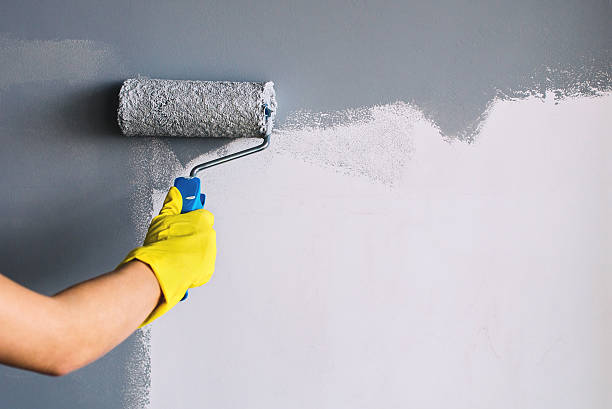
**DIY Natural Paint Recipes:**
Posted by on 2024-01-10
Creating your own natural paint allows for a uniquely organic and eco-friendly approach to artistry and home decoration. With simple ingredients often found within the confines of your kitchen or local grocery store, you can concoct vibrant hues that bring life to any canvas or wall. The process not only nurtures creativity but also ensures a safer environment free from the harsh chemicals typically associated with conventional paints.
Commencing this artistic journey requires some essential components such as flour for a binder, water as a solvent, and natural pigments sourced from the Earth's bounty. Pigments can be derived from various sources like spices—turmeric yielding a brilliant yellow—or minerals such as iron oxide for earthy reds and ochres.
To begin, one might concoct a basic flour paste by meticulously combining one part flour with two parts water, stirring constantly to achieve a smooth consistency devoid of lumps. This mixture is then gently heated until it thickens into a paint-like substance ready to embrace the chosen pigment.
Incorporating color involves grinding your selected natural material—be it charcoal for deep blacks or crushed berries for delightful purples—into a fine powder. This task may be accomplished using either mortar and pestle or electric grinder depending on one's preference and available tools. Once pulverized to satisfaction, blend this powder into the flour paste until homogeneity is attained and desired opacity is reached.
Experimentation plays an integral role in DIY natural paint creation; altering proportions can lead to different textures ranging from glossy finishes to more matte appearances. One may also explore additives like linseed oil for increased durability or even beeswax for subtle sheen enhancement.
The beauty of homemade paint lies in its versatility; use it on paper, wood, fabric, or walls—each surface offers an opportunity to witness how these organic compounds interact differently with varying substrates. And while longevity may not rival synthetic alternatives, there's undeniable charm in knowing your work embodies sustainability at its core.
Aspiring creators should remember patience is key—as you refine recipes through trial and error—and ventilation remains important due to potential allergens present within certain natural materials used during this creative endeavor.
DIY natural paint recipes celebrate resourcefulness while fostering an intimate connection between artist and medium—an experience wherein every brushstroke feels deeply personal because each component has been hand-selected by you, forging artwork steeped in authenticity that resonates with both heart and habitat alike.
Commencing this artistic journey requires some essential components such as flour for a binder, water as a solvent, and natural pigments sourced from the Earth's bounty. Pigments can be derived from various sources like spices—turmeric yielding a brilliant yellow—or minerals such as iron oxide for earthy reds and ochres.
To begin, one might concoct a basic flour paste by meticulously combining one part flour with two parts water, stirring constantly to achieve a smooth consistency devoid of lumps. This mixture is then gently heated until it thickens into a paint-like substance ready to embrace the chosen pigment.
Incorporating color involves grinding your selected natural material—be it charcoal for deep blacks or crushed berries for delightful purples—into a fine powder. This task may be accomplished using either mortar and pestle or electric grinder depending on one's preference and available tools. Once pulverized to satisfaction, blend this powder into the flour paste until homogeneity is attained and desired opacity is reached.
Experimentation plays an integral role in DIY natural paint creation; altering proportions can lead to different textures ranging from glossy finishes to more matte appearances. One may also explore additives like linseed oil for increased durability or even beeswax for subtle sheen enhancement.
The beauty of homemade paint lies in its versatility; use it on paper, wood, fabric, or walls—each surface offers an opportunity to witness how these organic compounds interact differently with varying substrates. And while longevity may not rival synthetic alternatives, there's undeniable charm in knowing your work embodies sustainability at its core.
Aspiring creators should remember patience is key—as you refine recipes through trial and error—and ventilation remains important due to potential allergens present within certain natural materials used during this creative endeavor.
DIY natural paint recipes celebrate resourcefulness while fostering an intimate connection between artist and medium—an experience wherein every brushstroke feels deeply personal because each component has been hand-selected by you, forging artwork steeped in authenticity that resonates with both heart and habitat alike.